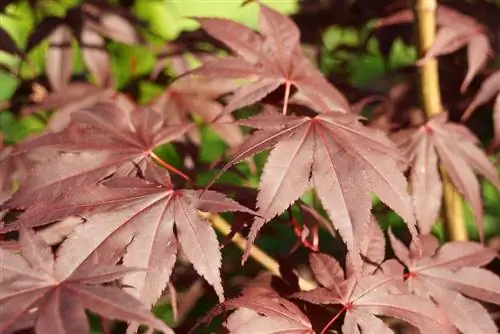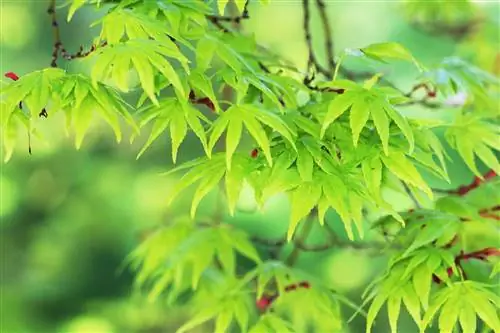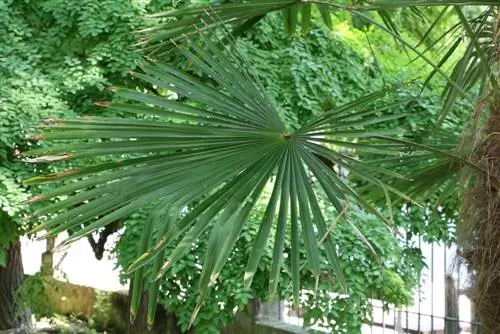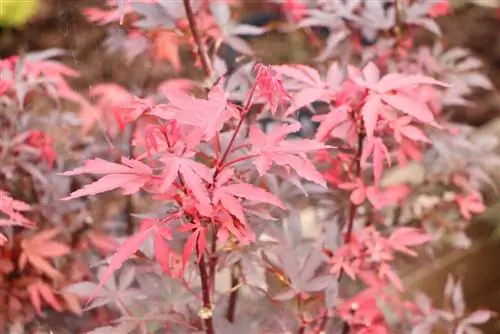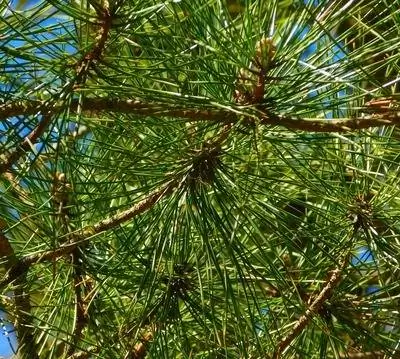- Author admin [email protected].
- Public 2023-12-17 03:39.
- Last modified 2025-01-24 12:45.
The cultivation of the Japanese maple in particular indicates whether it needs to be protected in winter or not. Since it comes from the Japanese mountain regions, which have a similar climate to the local latitudes, it can overwinter well in the garden bed. If the tree was grown in a container, it should be protected. How to properly overwinter is explained here.
Japanese maple hardy
As a rule, the Japanese maple is hardy. Because he is used to the local temperatures that also prevail in his homeland, the Japanese mountain regions, in winter. This means that when cultivating, there is very little that needs to be taken into account when it comes to winter protection. Older trees in particular can survive the winter well without protection if the location is right. This should not be too humid, which means that a location that can dry out easily through sunlight after rain or fog is recommended right from the start. The following should be taken into account in winter:
- avoid too much moisture
- Late frost can damage new leaf growth
- Cover the plant with fleece
- careful so that no new shoots are injured
- Mulching soil
Older trees from around the fourth to fifth year of life can tolerate winter temperatures down to -10° Celsius. If it gets colder, these should also be protected from severe frost in winter.
Tip:
Instead of covering the plant with fleece, you can also build a frame made of light wooden slats, to which the fleece is then attached all around. This can then be placed over the plant if necessary, i.e. on frosty nights, and protects it.
Container cultivation

If the Japanese maple was cultivated in a pot because there is no garden and the plant is placed on a balcony or terrace, then the roots in particular should be protected because more cold penetrates into a frosty pot days. A young maple tree in a pot, however, should be protected overall. You should proceed as follows:
- Move the bucket to a protected location
- covered corner on balcony or terrace
- Place the bucket on wooden plates or Styrofoam
- Mulch the soil thickly
- Wrap pot with sticks
- Cover the plant with plant fleece
- alternatively, move the pot to a frost-free place
- moderately bright and cool
- Basement or garage well suited
- no boiler room, it's too warm here
A winter location in the house is not suitable, because since the Japanese maple sheds its leaves in autumn, it is not a pleasant sight in the living rooms. It is also too warm in heated rooms. A bright staircase, on the other hand, is also well suited for overwintering in a pot, as is an unheated winter garden.
Tip:
If the pot has been moved to winter quarters, the Japanese maple should slowly be acclimated to warmer temperatures again. To do this, it can be taken outside on the first frost-free and sunny days in late winter. Keep out of the direct sun for the first few days and put it indoors again at night.
Location in the garden
Above all, you should pay attention to the right location in winter before planting. Because it shouldn't be too humid here. This means that a place directly next to a large wall on the north side of a house is not suitable. A location that is airy and slightly sunny, even in winter, is better. The right winter location looks like this:
- Partly shaded to slightly sunny
- airy
- still protected from easterly winds
- in an exposed garden bed
- on a meadow
- flanked by more trees
- no full shade
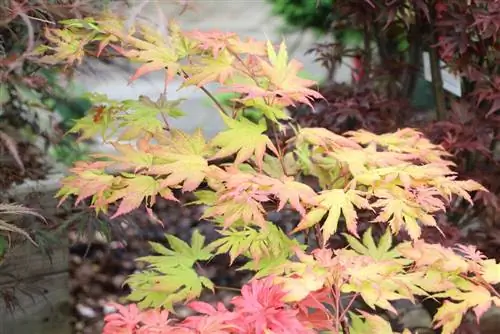
If the Japanese maple receives too much sun in winter, there is a risk that the branches and trunk will burn. However, the plant can be protected from this with a plant fleece that is placed around the crown and trunk.
Tip:
If a Japanese maple is to be planted in spring, the chosen location should be checked for suitability the previous winter and a decision made if necessary.
Cultivation in the garden bed
If the Japanese maple was cultivated directly in the garden bed, then the young plant must always be protected here in winter. Because the young trees cannot tolerate sub-zero temperatures. It is therefore always better to cultivate the plant in a bucket for the first few years and only move it to the desired location in the garden bed after four or five years. However, if the young maple was cultivated directly in the garden bed, then the following measures should be taken before the onset of winter:
- Mulch the soil thickly
- alternatively or additionally place brushwood plates
- so no frost gets to the roots
- Wrap trunk with brushwood mats
- Jute has also proven itself here
- protects against too much sunlight
- cover the crown with fleece after the leaves have dropped
The plant fleece must be carefully removed again before the new leaves emerge in spring. This means the Japanese maple gets enough sunlight and warmth throughout the day to develop new shoots. If there are night frosts here, these must also be protected and the plant must be covered with the fleece again overnight
Tip:
So that the temperatures in winter do not have to be constantly monitored, it is advisable to protect the older Japanese maple at least to a certain extent in winter, for example by covering the soil with mulch.
Pouring
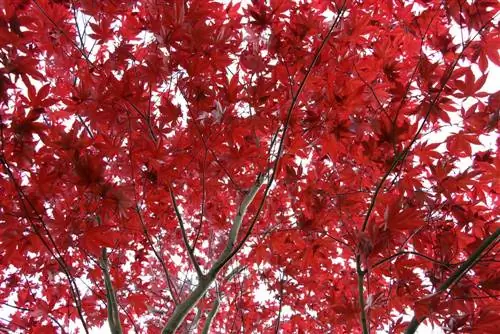
So that the Japanese maple does not dry out in winter, especially if it was cultivated in a sunny garden bed, it must also receive moderate watering in winter. Likewise, potted plants that are no longer exposed to natural rain can quickly suffer drought damage in winter. Therefore, watering should be carried out in the cold months as follows:
- only water on frost-free days
- only when the soil has dried out
- too much moisture is not tolerated in winter
- only during longer dry periods
- Do a finger test on soil
- Don’t forget the bucket in your winter quarters
- water here too, moderately if necessary
- Avoid waterlogging
Tip:
In winter, it is better to water moderately in one day than to give too much water at once. A second supply of water can then take place a few days later.
Fertilize
From the end of August to the beginning of September, the Japanese maple no longer needs to be fertilized. Because it sheds its leaves in autumn, it no longer needs as many nutrients. In addition, the layer of mulch, which is placed on the earth to protect it from the cold, also provides a supply of nutrients. The first fertilizer applications are then made again in late winter, before the maple sprouts again. Commercially available liquid fertilizer, which is added to the irrigation water, is suitable for potted plants. For garden plants, compost can be carefully added underground in spring.

